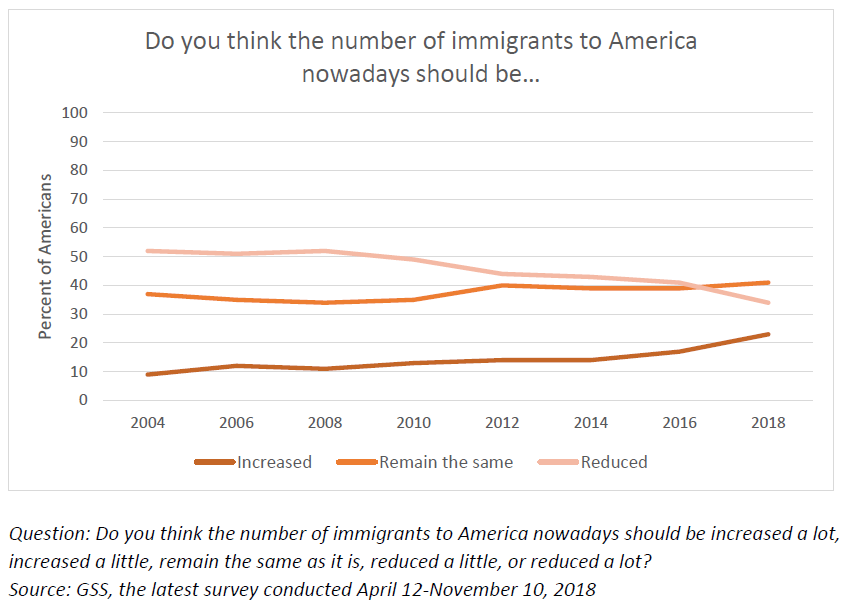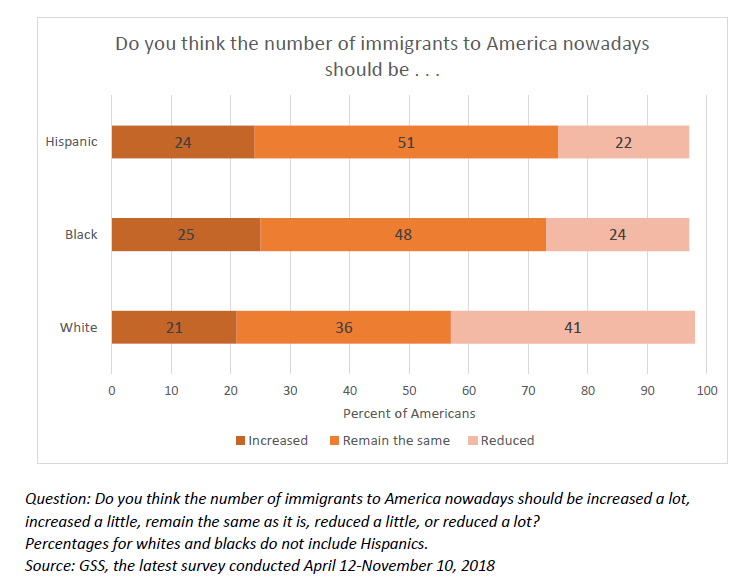
Immigration has been dominating headlines in recent years. A collaborative analysis by The AP-NORC Center for Public Affairs Research and the GSS staff using the 2018 General Social Survey (GSS) shows that for the first time, the number of Americans who want immigration to the United States to be decreased has dipped below the percent who say it should remain static.
Overall, 34 percent of Americans say immigration should be decreased, down from 41 percent two years ago. Forty-one percent say it should remain the same, not much different from the 39 percent in 2016. Few Americans would like to see an increase in immigration, but that has also risen to 23 percent, up from 17 percent in 2016.

Ten years ago, there were few partisan differences, but in 2010, the views of Republicans and Democrats began to diverge. While few say immigration should increase, nearly three times as many Democrats as Republicans would like to see more immigrants allowed into the country according to the 2018 GSS survey. And Republicans are more than twice as likely as Democrats to say immigration should be reduced.
Still, while most Republicans still want a reduction in the number of immigrants, it has dropped to 52 percent, down from 62 percent in 2016.

Whites are more inclined to favor a reduction in the amount of immigration than blacks or Hispanics, while blacks and Hispanics are more likely to support an increase or maintaining the current level.

The GSS is administered by NORC at the University of Chicago, primarily using in-person interviewing. The GSS started in 1972 and completed its 32nd round in 2018. For the past 46 years, the GSS has been monitoring societal change and the growing complexity of American society. The GSS is the largest project funded by the Sociology Program of the National Science Foundation.
The typical sample size was 1,500 prior to 1994, but increased to 2,700-3,000 until 2008 and decreased to 2,000-2,500 for the most recent surveys. Resulting margins of error are between +/- 3.1 for the smaller sample sizes and +/- 2.2 percentage points for the larger sample sizes at the 95 percent confidence level. The GSS 1972-2018 Cumulative File was utilized to produce the statistics presented.



